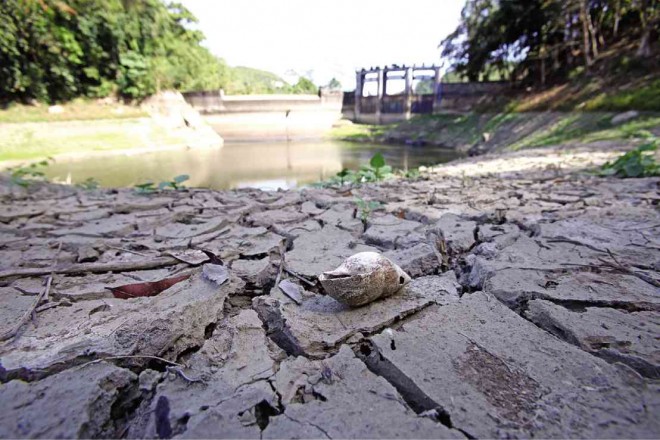
Just how hot it is in Cebu City nowadays can be gleaned from the appearance of parched soil where there used to be water in the dam being maintained by the Metro Cebu Water District in the city. JUNJIE MENDOZA/CEBU DAILY NEWS
CEBU CITY—Caretakers of the city zoo had started implementing measures to protect at least 100 animals in the zoo from the extreme heat generated by what weather experts said was a mild El Niño phenomenon now gripping Cebu.
Giovanni Romarate, zoo manager, said animals are now being bathed thrice a day to relieve them of the heat.
The animals are also being given water mixed with powdered dextrose to prevent dehydration.
Romarate said the steps were taken after zoo keepers noticed the animals getting weak because of extreme heat.
The city zoo in Barangay Kalunasan is home to at least 100 animals belonging to 23 species.
They include turtles, crocodiles, snakes, monkeys and different bird species.
Romarate said the turtles and crocodiles had been experiencing shortness of breath when temperature started to rise to an average of 30 degrees Celsius in late February.
He directed his staff to bathe the animals thrice a day and to regularly water plants, trees and even walkways.
The Philippine Atmospheric Geophysical and Astronomical Services Administration (Pagasa) said temperature in the city on Black Saturday at 2:15 p.m. reached 33.6 degrees Celsius, the highest so far this year.
The highest temperature recorded in the city was 36.4 degrees Celsius on May 30, 1979.
Officials of the mountain villages of Pung-ol Sibugay, Lusaran, Guba, Binaliw, Sapangdaku, Buhisan, Busay, Adlaon, Kalunasan, Budlaan, Cambinocot, Sirao and Pamutan have been complaining of dwindling water supply.
Marojoriat Cangmaong, village chief of Malubog, said the village expects the extreme heat to have an adverse effect on at least 100 flower farms in the village.
“Our flowers are wilting,” said Cangmaong.
Water would be delivered to the mountain villages by the city fire department.
Oscar Tabada, Pagasa chief meteorologist based on Mactan Island, said temperature in Cebu started to rise in February and is expected to go up to 34 degrees Celsius this month.